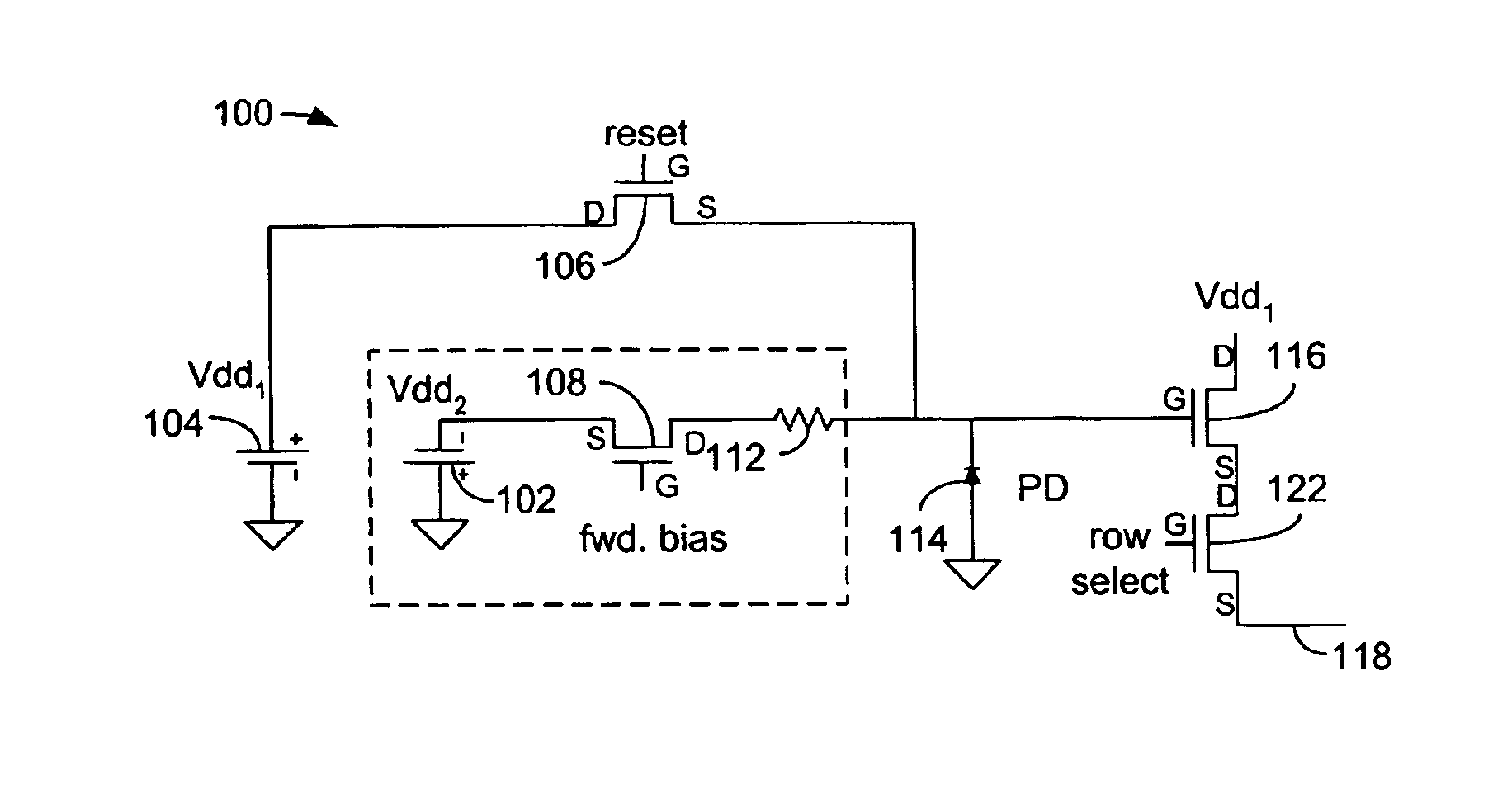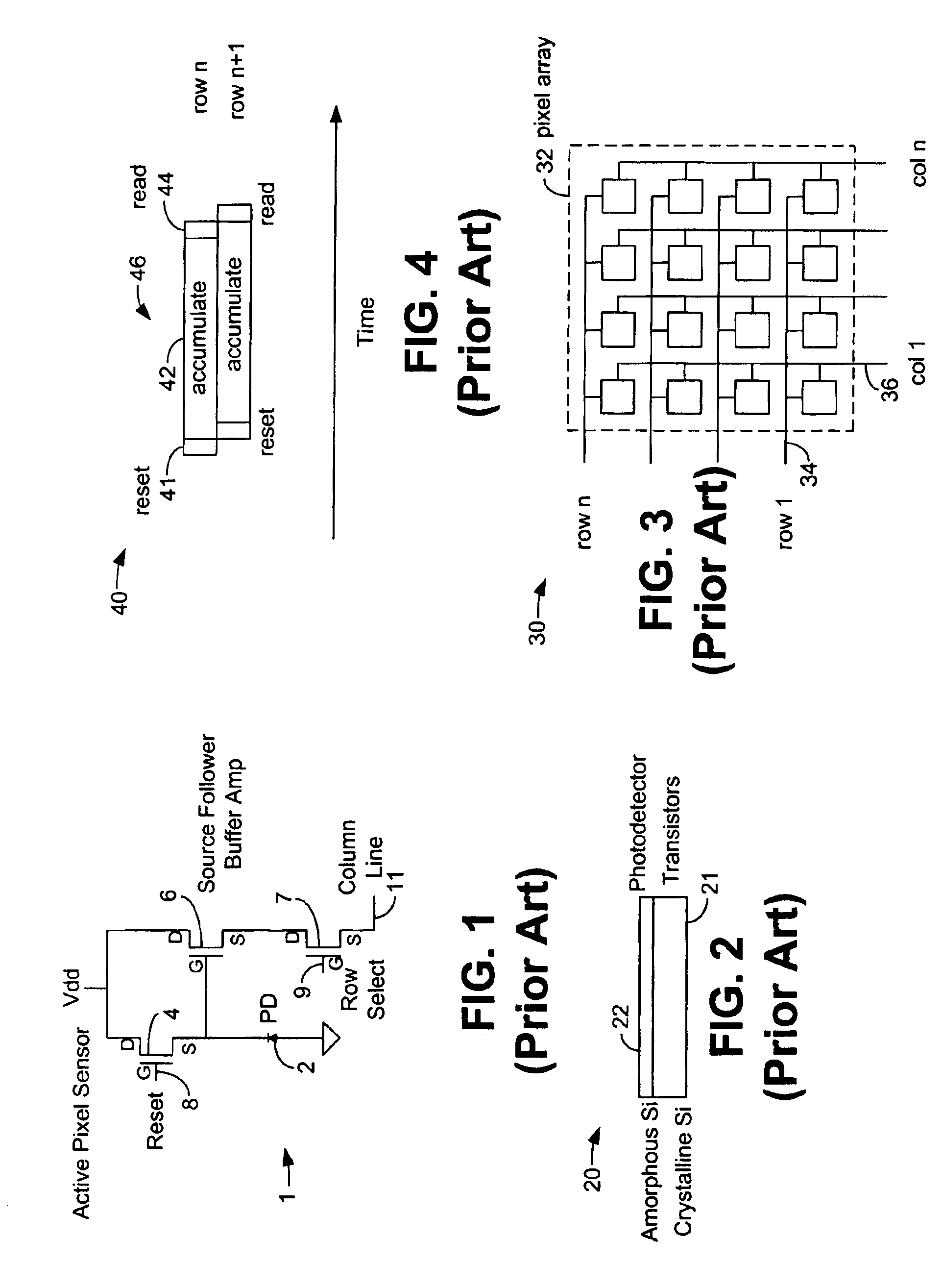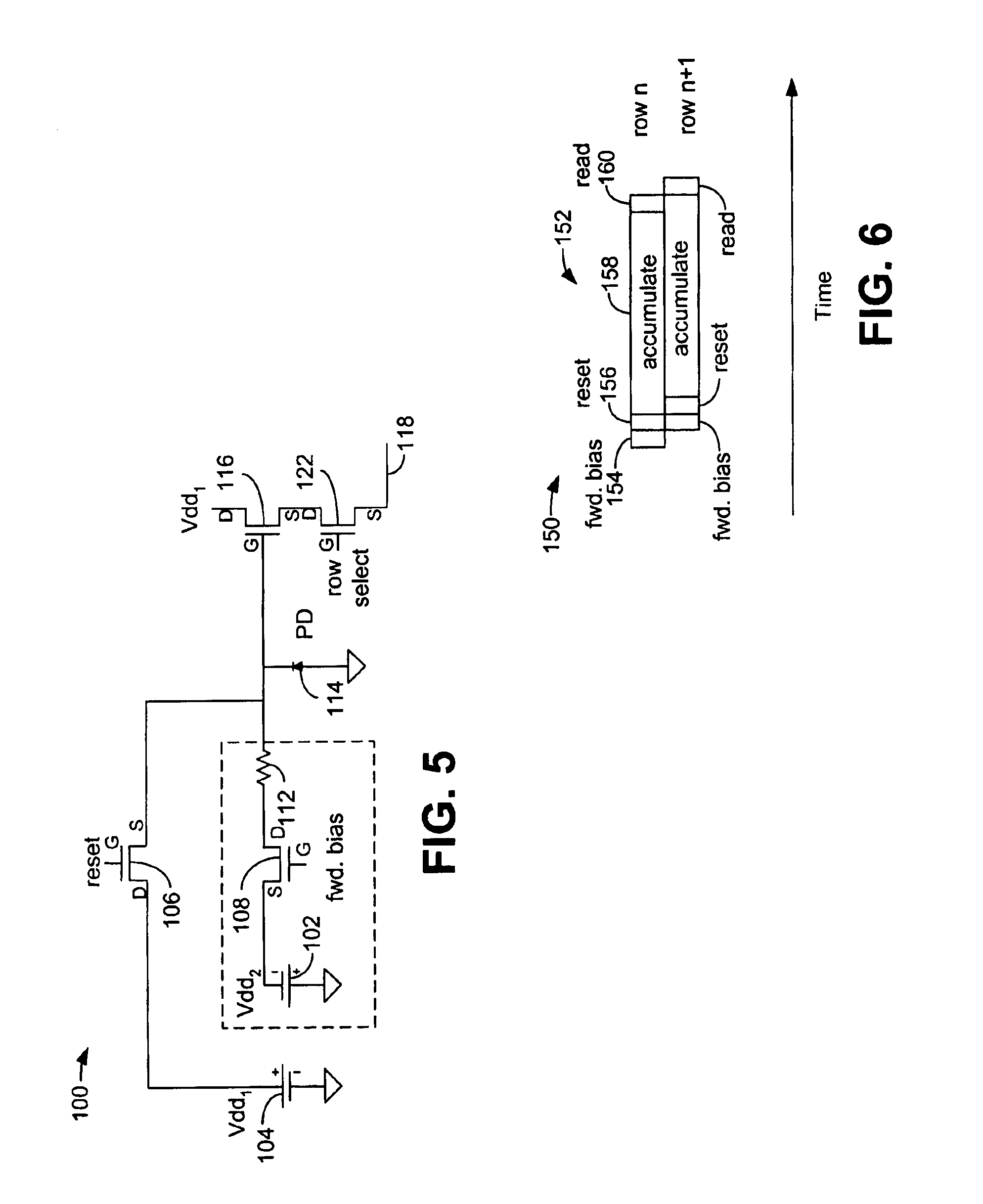System and method for reducing trapped charge effects in a CMOS photodetector
a photodetector and complementary metal oxide semiconductor technology, applied in the field of light capture devices, can solve the problems of substantially incapable charge traps of storing the illumination-dependent charge that is later generated, substantially incapable charge traps of storing the illumination-dependent charge, etc., and achieve the effect of reducing the effect of electric charge trapped and reducing the effect of illumination-dependent trapped charge effects
- Summary
- Abstract
- Description
- Claims
- Application Information
AI Technical Summary
Benefits of technology
Problems solved by technology
Method used
Image
Examples
Embodiment Construction
[0025]FIG. 5 is a schematic diagram illustrating a first embodiment of a pixel 100 constructed in accordance with the invention. The pixel 100 includes a photodetector 114, a pair of transistor switches 106 and 108, a resistor 112, a transistor 116, a transistor 122, a negative-polarity voltage source 102 and a positive-polarity voltage source 104. Although not shown in FIG. 5, the photodetector 114 is fabricated in a semiconductor layer comprising hydrogenated amorphous silicon, while the transistor switches 106 and 108, the resistor 112 and the transistors 116 and 122 are fabricated in a semiconductor layer comprising crystalline silicon.
[0026]The anode of the photodetector 114 is connected to ground. The negative-polarity voltage source 102 is coupled to the cathode of the photodetector 114 via the transistor switch 108 and a resistor 112. Specifically, the source of the transistor switch 108 is connected to the negative-polarity voltage source 102 and the drain is connected to t...
PUM
 Login to View More
Login to View More Abstract
Description
Claims
Application Information
 Login to View More
Login to View More - R&D
- Intellectual Property
- Life Sciences
- Materials
- Tech Scout
- Unparalleled Data Quality
- Higher Quality Content
- 60% Fewer Hallucinations
Browse by: Latest US Patents, China's latest patents, Technical Efficacy Thesaurus, Application Domain, Technology Topic, Popular Technical Reports.
© 2025 PatSnap. All rights reserved.Legal|Privacy policy|Modern Slavery Act Transparency Statement|Sitemap|About US| Contact US: help@patsnap.com



